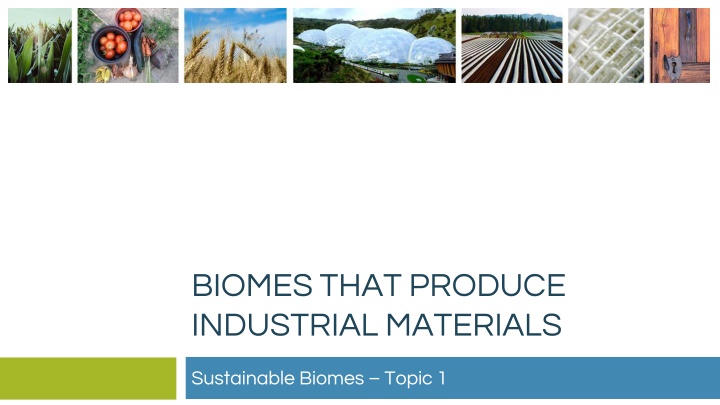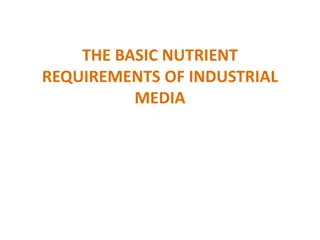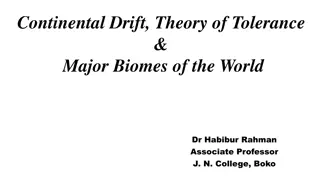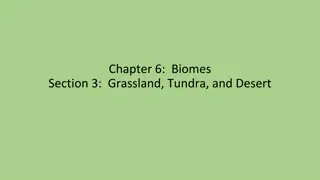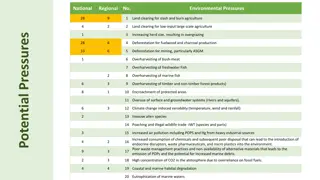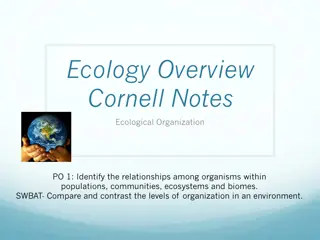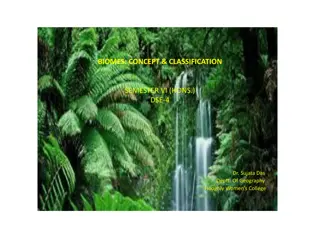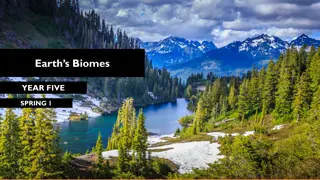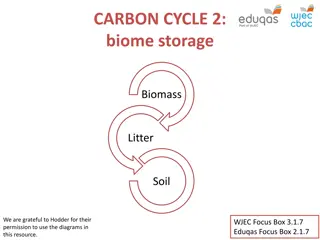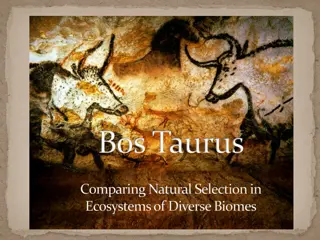Sustainable Biomes for Industrial Materials Production
Explore biomes that produce industrial materials such as mineral resources and timber in Australia. Learn about the types of biomes, the impact of features on material production, and the differences between native and plantation forests for industrial timber. Discover how indigenous and introduced tree species contribute to the industrial material supply chain in various biomes.
Download Presentation

Please find below an Image/Link to download the presentation.
The content on the website is provided AS IS for your information and personal use only. It may not be sold, licensed, or shared on other websites without obtaining consent from the author.If you encounter any issues during the download, it is possible that the publisher has removed the file from their server.
You are allowed to download the files provided on this website for personal or commercial use, subject to the condition that they are used lawfully. All files are the property of their respective owners.
The content on the website is provided AS IS for your information and personal use only. It may not be sold, licensed, or shared on other websites without obtaining consent from the author.
E N D
Presentation Transcript
BIOMES THAT PRODUCE INDUSTRIAL MATERIALS Sustainable Biomes Topic 1
Biomes that produce industrial materials 1. Write down what is going on? What evidence can you see that makes you say that? 2. What animals and plants might have lived in this biome? What evidence for this can you see? 3. What is the climate of this biome like? What evidence for this can you see? (You have 5 minutes)
Biomes that produce fibres Learning Goals Learning Goals To understand what types of biomes produce industrial materials To understand how the features of the biome impact on the types and how much industrial materials are produced Success Criteria Success Criteria I know what types of industrial materials are produced in biomes I can describe features of biomes that produce industrial materials 1. 2.
Industrial Materials (write these notes) In Australia, the most commonly produced industrial materials from biomes include: Mineral resources coal, iron ore, bauxite, aluminium, uranium, copper Timber resources
Biomes for Industrial Timber Make these notes: Industrial timber comes from native forests or plantations Native forests are 99% of Australia s forests. They cover 147.4 million hectares of land. Plantation forests are tree farms where trees are artificially planted for timber. These are native or introduced species and are usually planted in rows. The main difference between the native and plantation forest biomes is (you write your answer here)
Biomes for Industrial Timber Make these notes: Hardwoods are harder, denser species of trees for timber e.g. Eucalyptus Softwoods are less dense, easier to cut down e.g. Pine trees
Location of plantation forests in Australia Examine the map and complete the sentence: In Australia Plantation In Australia Plantation Forest biomes are Forest biomes are located located Use words such as coast, state where (compass direction)
Forest structures & features Characteristics that are used to classify forest biomes are crown cover and forest height Crown cover is Forest height is
Plantation forest biomes Be ready to discuss after watching WHY did they make a plantation forest in South Australia? WHAT did they look for when choosing which species to grow? WHAT has selective breeding helped them do? HOW has technology assisted with forest management? 1. 2. 3. 4. Watch: https://www.youtube.com/watch?v=ft7KsDzU0gw
Writing Activity Explain how selective breeding and technology assist the production of Industrial Timber resources.
Recap & exit tickets Success Criteria Success Criteria I know what types of industrial materials are produced in biomes I can describe features of biomes that produce industrial materials 1. 2. Exit Ticket Exit Ticket 1. Why does it matter? Why is it important to produce industrial materials in an environmentally sustainable way?
